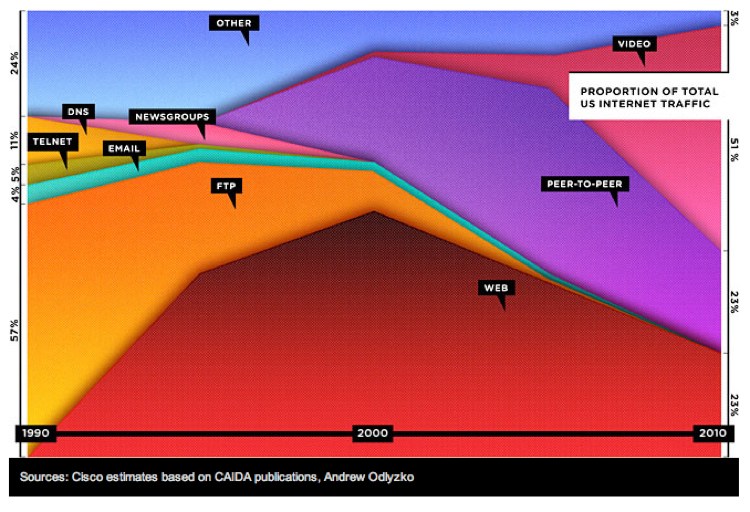That’s the headline of a thoughtful story on the difference between web video and television from the Business Insider blog
This quote from the story really struck me
But Web video isn’t television. It’s something else entirely. And in the past 5 years, from 2005 to 2010, as Web video has moved to become the fastest growing and most prevalent form of traffic emerging on the Web, something else happened.
Web video abandoned TV.
They also use the chart I mentioned when I pitched the class. from the Wired Magazines story: The Web Is Dead, Long LIve the Internet.
And here’s why things are changing, according to Chris Anderson, the editor of Wired Magazine:
Three things have changed in past five years — the combination is like rocket fuel for Web video.
1. Cameras. Web video cameras are now standard fare on cell phones. FlipCams are cheap and record remarkable HD video. The sales of Digital SLRs (DSLR’s) put high quality camera with interchangeable lenses in the hands of mid-budget pro-sumers.
2. Bandwidth. Back in 2005, broadband was still elusive for many Web surfers. And video just wasn’t a very good experience on dial up. Now, video moves with rare buffering as users find they are able to get a HD experience with relative ease.
3. Distribution. YouTube was important in breaking the monopoly that broadcast and cable had over video distribution, but since 2005 more and more distribution solutions have come on line. Devices like the iPhone and iPad have made Web video viewing far more ubiquitous. But the barrier between the Web and the living room flatscreen is about to burst wide open. With boxes like Roku, Boxee, and AppleTV(2) on the way, viewers are going to be able to choose between broad Web video offerings, and more limited cable/entertainment packages. And ‘over the top’ solutions like Netflix make the Internet to flatscreen option all the more reasonable.
Certainly lots of new ideas for journalists to consider.


